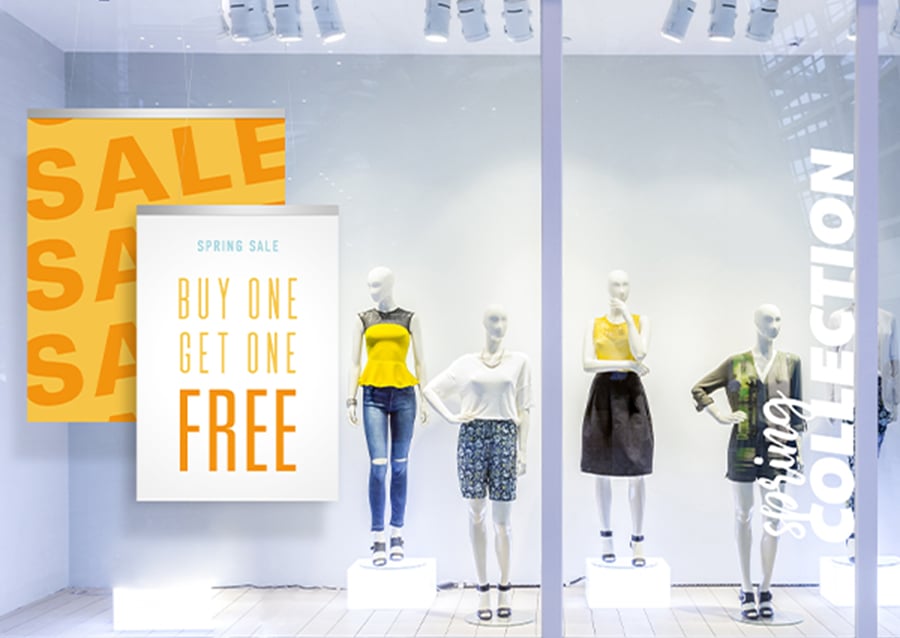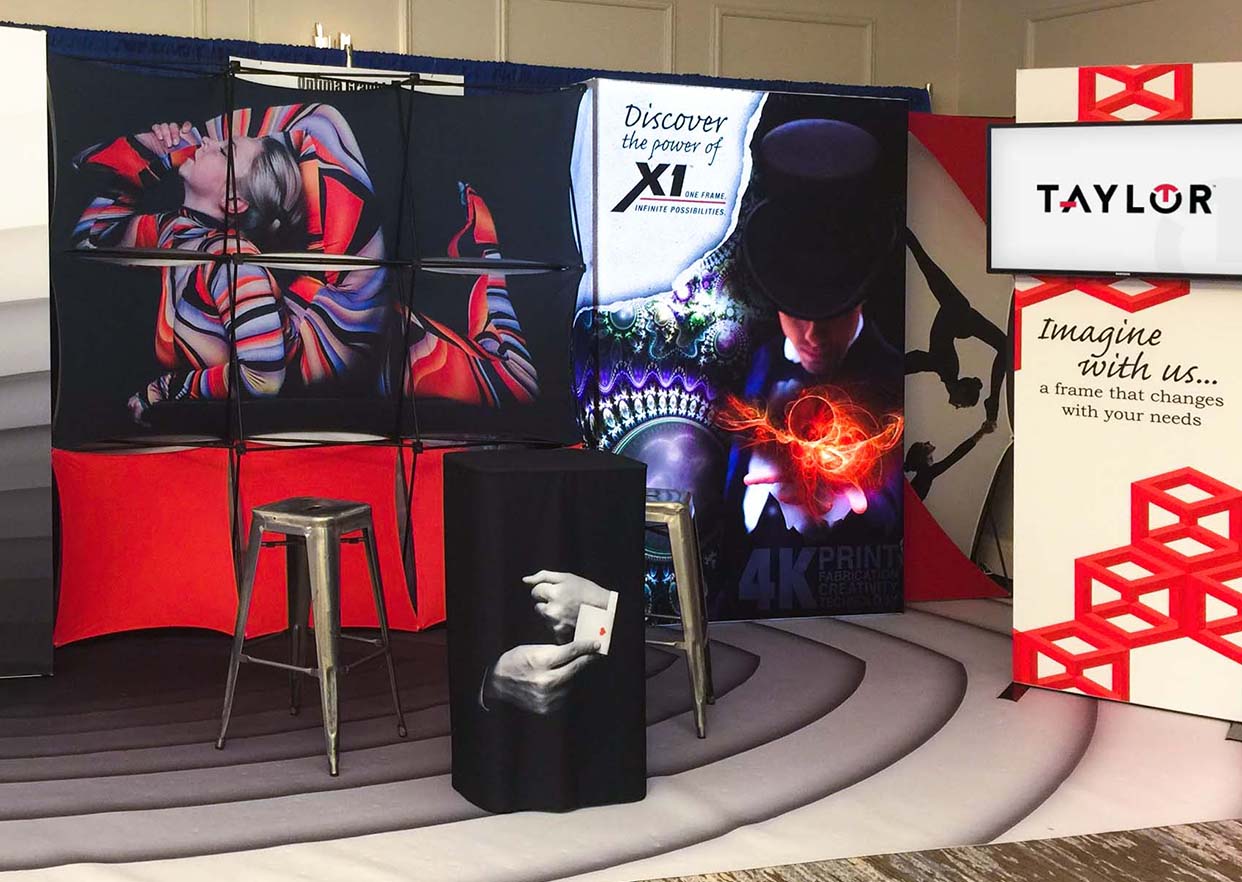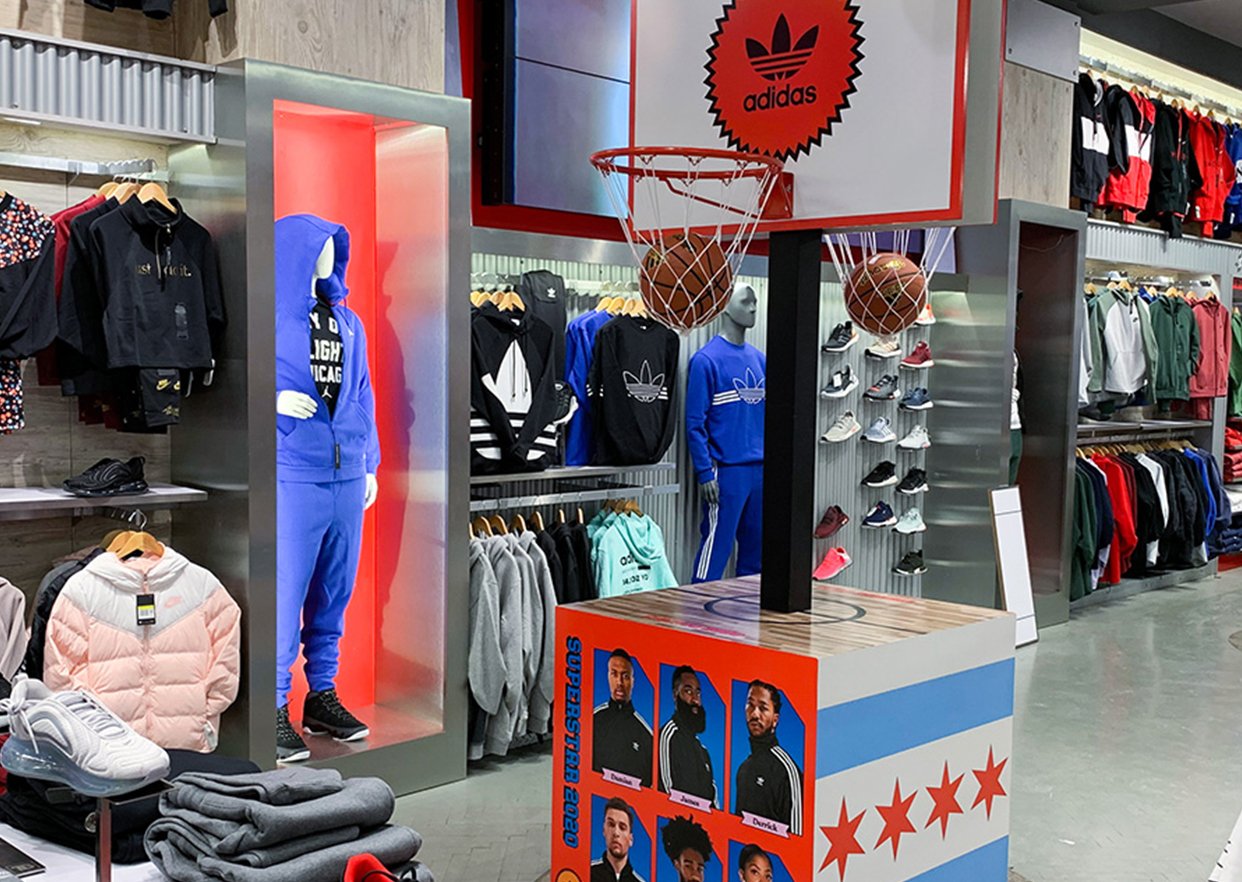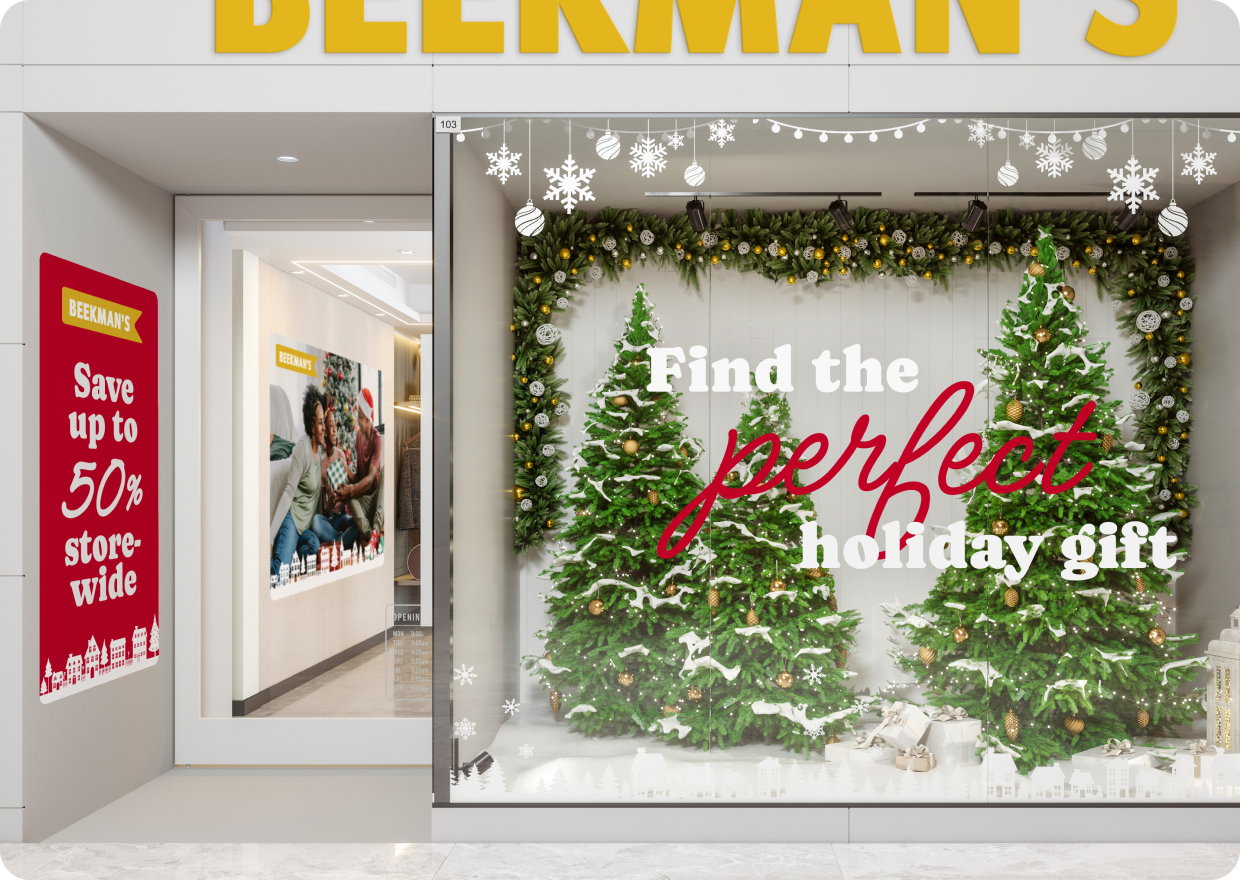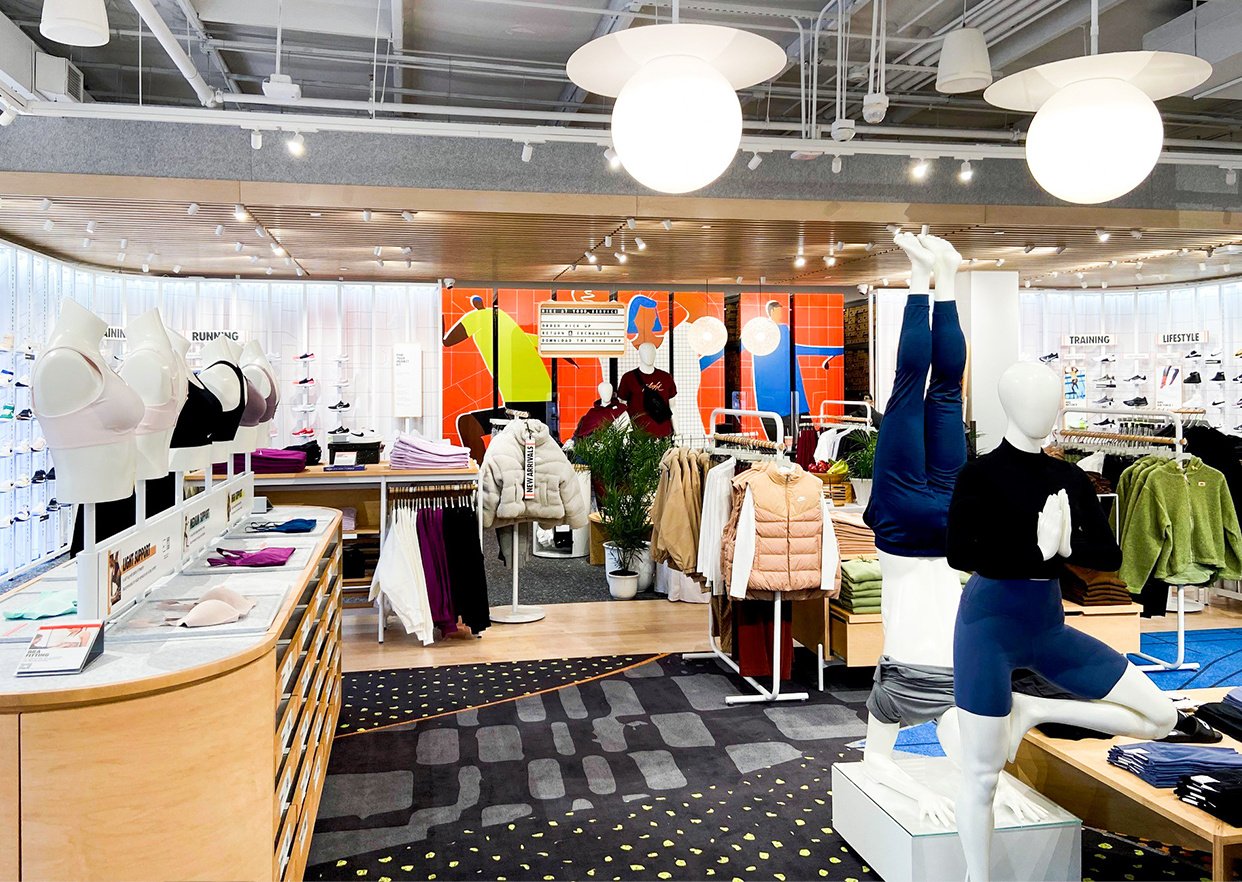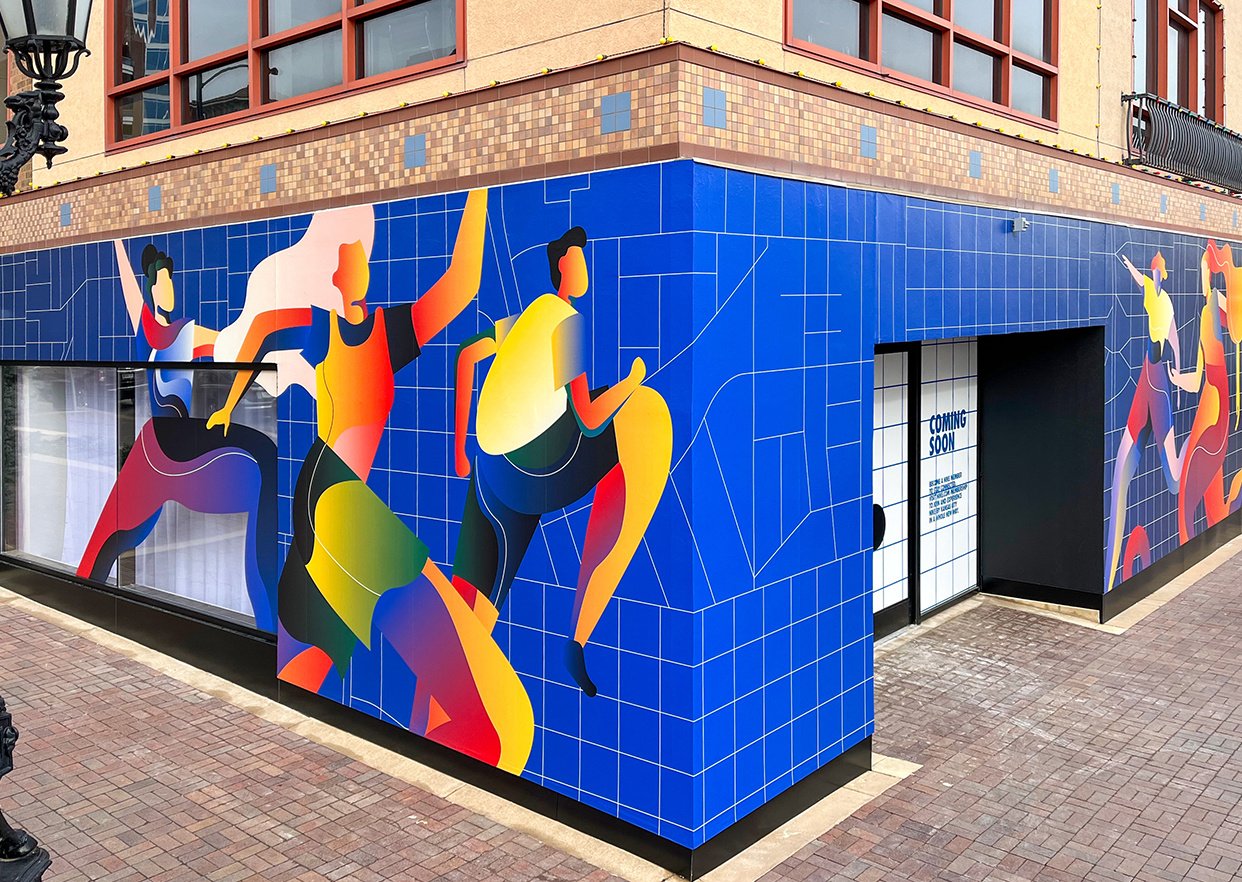What if you had a way to positively influence your customers' buying decisions? According to Harvard Business School Professor Gerald Zaltman, you can.
In his book "How Customers Think: Essential Insights into the Mind of the Market," Gerald Zaltman says 95% of a customer's purchase decisions are emotional.
Suppose your business has a brick-and-mortar location. In that case, you have a priceless opportunity to make an emotional connection with your customers by engaging all your visitors' senses. You see, customers still crave the tactile experience a retail store offers.
When your customers interact with your products, they're more likely to buy something from your store. But you don't need a retail location to give customers the opportunity to meaningfully interact with your brand.
If your business is virtual, there are exciting trends in visual merchandising you can embrace right now. These state-of-the-art trends can help move your customers from the looking stage to the buying stage.
The Research
Surprisingly, Zaltman's book says customers are more driven by emotion than they like to admit.
When surveyed, customers regularly report that they read reviews and compare brands and prices before making buying decisions. But Zaltman's research contradicts what customers say on surveys. In general, consumers don't realize they're driven by unconscious urges, the biggest of which is emotion.
Zaltman says if you only market the attributes of your product, you'll likely get ho-hum results. And the uninspired results you receive are because you miss the subconscious, human element in the decision-making process.
Feelings drive humans. So if you want your customers to remember you, they need to be engaged and impassioned when interacting with your brand.
In-Store Experiential Trends
Customers want experiences and the brands that can facilitate outstanding customer experiences will be the ones that differentiate themselves. Without further adieu, here are three ways you can emotionally engage your clients with in-store and online experiences.
1. Bring The Outside In
Have you heard of the Biophilia Hypothesis? According to Wikipedia, the hypothesis “suggests that humans possess an innate tendency to seek connections with nature and other forms of life.”
Biophilic Design is a practice that stems from the hypothesis. Its name was only recently coined, but the concept has been used in architecture as far back as the Hanging Gardens of Babylon.
Your brand can use Biophilic Design to appeal to your customers' instinctive desire to connect with the natural world.
Our modern world too often consists of concrete and dark spaces. By bringing the outside in, you can provide your customers with a respite from the modern world. In doing so, you’ll increase their desire to spend time in your shop and browse. Here are a few ways to increase natural elements in your retail space:
Increase Natural LightStudies show exposure to natural light releases serotonin in your brain, which improves your mood. In general, the more natural light you expose your customers to, the happier they’ll be. One study says skylights increase sales by a whopping 40%.
Choose a retail space with skylights and lots of windows. If you’re already in a space with few natural light options, maximize what you have by replacing heavy shades and blinds with window curtains. You can also change your store’s lightbulbs to Daylight LEDs
Include Vibrant Plant LifeFill your space with lovely, luscious natural green plants and flowers. Create a living wall with an easy-to-build kit. Use strategically placed potted plants and vases of cut flowers and hang greenery from the ceiling. If you’re going to embrace the green life, be sure to keep your living plants well cared for so they look lush and healthy.
Incorporate Natural Materials and Reclaimed WoodChoose materials with low concentrations of volatile organic compounds (VOCs). VOCs are present in paints, wood preservatives, cleaners, carpets and other building materials. Ideally, your retail space should have the lowest VOCs possible since many people visit your store daily.
Opt for green building materials like reclaimed wood and select low-VOC materials to help reduce the presence of VOCs in your store.
2. Use VR to Increase Engagement
Virtual reality is a transformational tool that can create compelling, engaging experiences for your customers. If you’re skeptical about Virtual Reality, the following statistics might convince you:
- ABI Research says VR technology in retail and marketing sectors should generate $1.8 billion by 2022.
- Head-mounted displays (HMDs) for virtual reality and augmented reality are moving past first-generation devices into moderate adoption. Experts expect shipments for HMD sales to ramp up from 27.5 million in 2018 to 52 million by mid-2020.
With VR, your brand can simulate an immersive environment your customers wouldn’t otherwise experience. The interactive 3D world provides a compelling real-time experience similar to real life.
Virtual reality also gives your clients the ability to visualize how they'd use your products more accurately. The result? More confidence in their purchasing decision means more purchases and fewer returns. When Macy’s deployed VR, its returns decreased to less than 2%.
You can use virtual reality to guide your customers through your store to find products more efficiently. Or, employ the power of VR on your website or in your retail space to help your customers virtually place products in their homes to see how they look.
Your brand can use VR in its physical or online store. Keep in mind; you may need a tech upgrade to make VR a reality.
3. Integrate Rich, Informational Signage
The times and the signs are changing. Retail signs are getting less formal, more engaging and more humorous.
For example, forward-thinking retailers have brought the ubiquitous digital call-to-action button into the physical world. Brands are creating signs with CTAs like “Try Me On” or “Smell Me.”
You can also use signs to inform, entertain and inspire your customers. For example, try incorporating signs throughout your store that tell your visitors a story as they move from section to section.
You can also use directional signage to guide your customers along a predetermined path through your store if you want to ensure they encounter specific products.
Light boxes and digital signs capture your customers’ attention and add a touch of tech to your space. If you’re thinking of upgrading your store’s signs and graphics, keep these tips in mind:
- Keep your copy bold and concise.
- Use contrasting colors and do a little research on color theory.
- Use large fonts.
- Lure customers in the door with unique sidewalk signs.
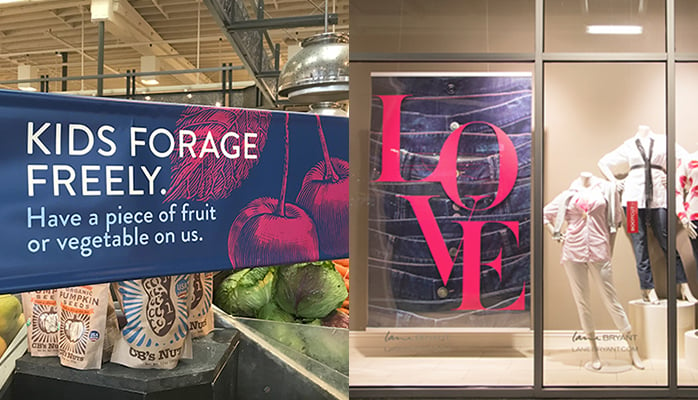
Digital Experiential Trends
Digital marketing strategist Scott Drosselmeier says he likes experiential marketing because it’s “a valid and exciting form of marketing that keeps human interaction in the conversation.”
It can help position your brand as creative, modern and interactive. And, you can use experiential marketing to fit our digital world; it’s an effective way to grab the attention of media and influencers and foster sharing online through social media.
1. Personalization
Personalization is a chance for your brand to create a direct link with your customers. Premium beverage company, Jones Soda, is known for unusual flavors and quirky packaging.
The beverage company allows its customers to post photos on its website, hoping their photos will be selected for printing on soda bottles. Customers can also order bottles with their personalized labels.
The strategy helps get customers to engage with the brand through co-creation, ideally making them more invested.
2. Interactive Activity
For International Women’s Day, Ikea created a digital card game that customers could play and post to their Instagram Stories. Ikea designed the card game to inspire honest conversations between couples, housemates, friends and co-workers.
The game's concept stems from findings that women typically do up to three times as much unpaid domestic duties as men.
Ikea promoted the launch through a partnership with Swedish singer and activist Zara Larsson via a YouTube video explaining FiftyFifty. The effort tries to make a pressing, thorny social issue more accessible through social media gamification.
Final Thoughts
There are many ways you can utilize visual marketing to create experiential touchpoints for your customers.
Remember, the checkout area is the last touchpoint area before your customers leave the store, and it’s often overlooked. Be sure to engage your customers’ senses to make a lasting and positive impression.
When all of your visual marketing aligns, from experiences to merchandising displays to signage to online advertising, you strengthen the emotional connection customers have with your brand.




